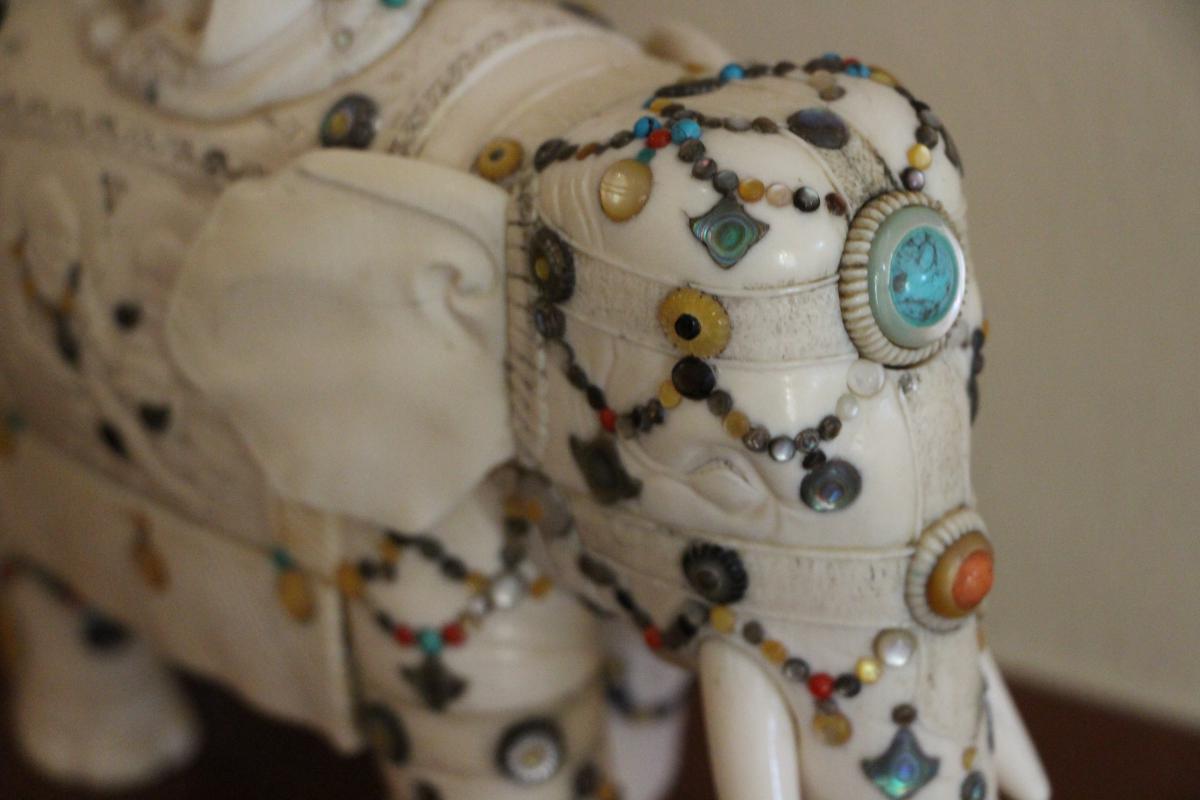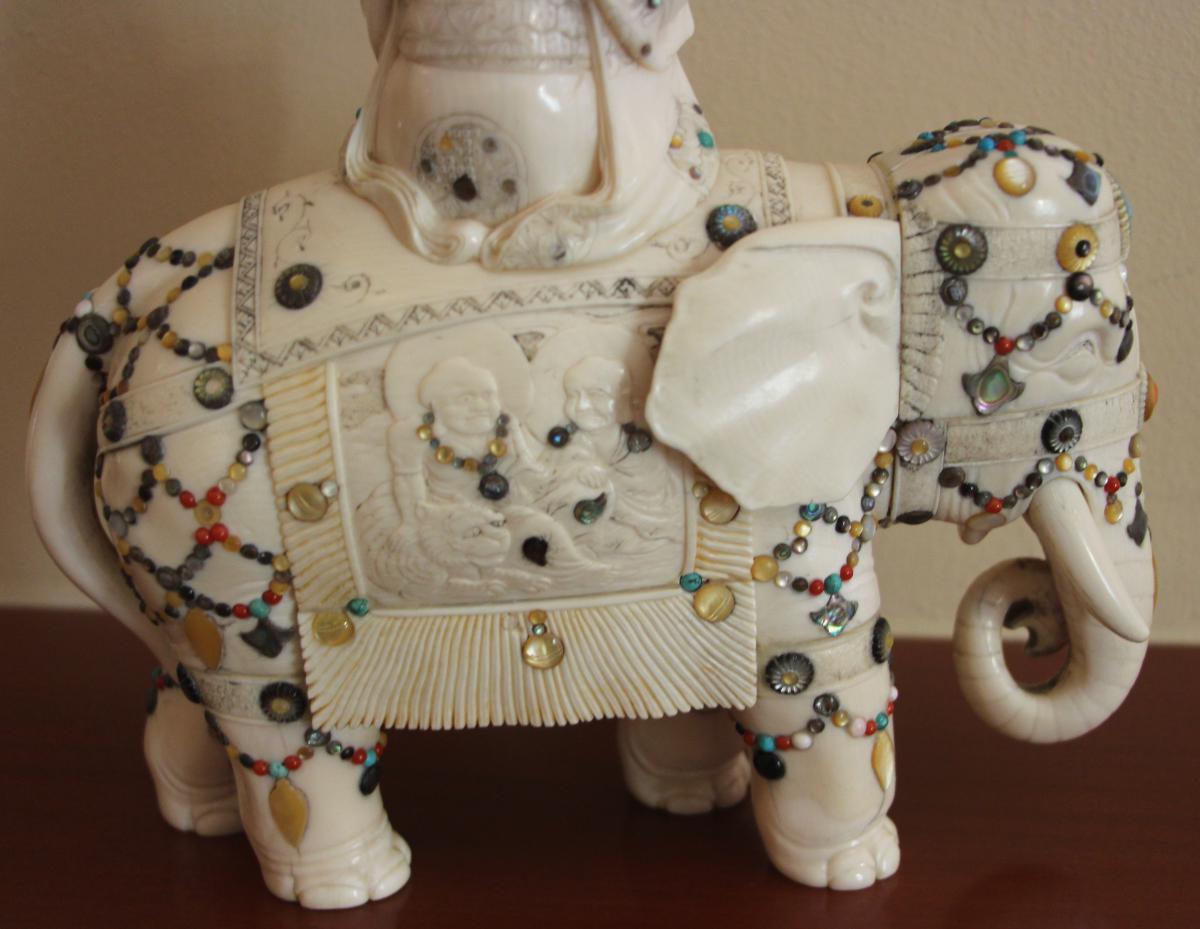19th Century Ivory Okimono representing a Woman on an Elephant
Gorgeous okimono with shibayama inlay representing a woman on an elephant.
.
- Height 9.45 inches
- Width 8.27 inches
- Japan, Meiji Era : Circa 1880
Shibayama Inlay (Shibayama Zōgan) is a lacquer art form distinguished by high relief carved inlays made from shell, coral, tortoiseshell, and ivory. Many gorgeous Shibayama crafts were exported during the Meiji period (1868–1912).
.
The lacquer inlay art form known as Shibayama is named after the Shibayama area of present-day Chiba prefecture.
Shibayama inlay was the brainchild of Ōnoki Senzō, an Edo haberdasher who lived during the An’ei era (1772–1781).
.
Shibayama differs from other inlaid lacquer arts in that the intricately carved inlay pieces instead being embedded flush into the ground material, protrude in high-relief above the surface to create an applique-like design.
It is this that distinguishes Shibayama from other lacquer art forms.
In fact, the word Shibayama can also be used to refer specifically to these relief inlay pieces.
.
Shibayama began with the delicate aesthetics of the era under the rule of the eleventh Edo shogun, Tokugawa Ienari (1773–1841), becoming popular household items patronized by shoguns, feudal daimyo lords, and wealthy merchants.Shibayama was dubbed the “oriental mosaic art” amidst the many Japanese arts and crafts introduced at the Paris World Exposition in 1867, attracting the attention of those who visited the exposition.
.
Shibayama crafts became popular souvenirs among Westerners who visited Japan after the Meiji Restoration (1868), when Japan opened trade to the outside world.
.


















